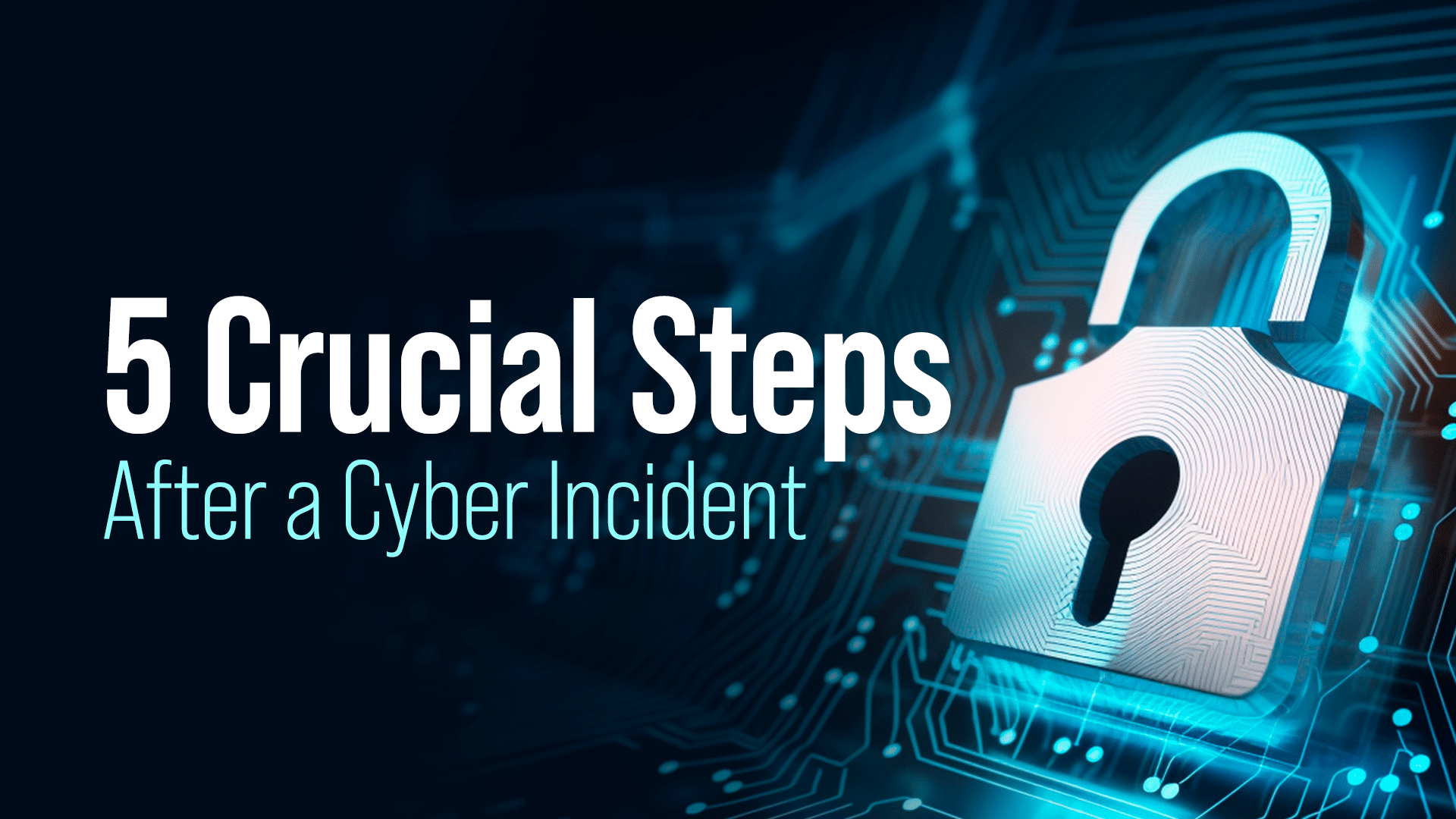The threat of cyber incidents looms large. Knowing how to respond is paramount to minimizing damage, whether it’s a phishing attempt, a ransomware attack, or a data breach. If you suspect a cyber incident, don’t panic. Instead, follow these five crucial steps to safeguard your digital assets and protect your online presence.
Notifying Your IT Company Immediately
Before diving into the five crucial steps mentioned earlier, it’s imperative to highlight the significance of promptly notifying your IT company or department when you suspect a cyber incident. They possess the expertise and resources necessary to assess the situation comprehensively. You ensure a coordinated and effective response by involving them from the outset. Their insights and guidance can be invaluable in mitigating potential damage and identifying the incident’s root cause. In the realm of cybersecurity, time is of the essence, so do not hesitate to reach out to your IT professionals as your first course of action.
- Isolate and Disconnect: Act swiftly when you suspect a cyber incident. Isolate and disconnect the affected device or network from the internet. This immediate action prevents further intrusion and limits the potential spread of malware.
- Notify the Right People: Informing the appropriate parties is crucial after disconnecting. Contact your IT department or a cybersecurity expert to assess the situation. Reporting the incident promptly is essential for a swift and coordinated response.
- Preserve Evidence: Documenting all relevant information is vital. This includes taking screenshots, recording error messages, and identifying suspicious files. Preserving this evidence can prove invaluable when identifying the source and nature of the attack.
- Change Passwords and Credentials: Once you’ve secured the situation, change passwords for all compromised accounts. Ensure that these new passwords are strong and unique to minimize the risk of further breaches. Consider implementing multi-factor authentication for added security.
- Investigate and Remediate: Collaborate with cybersecurity experts to conduct a thorough investigation. This will help determine the extent of the incident and identify potential vulnerabilities in your systems. Implement security updates and enhancements to prevent future attacks.
In addition to these immediate steps, consider these long-term measures to enhance your overall cybersecurity:
- Regularly backup your data to a secure location. This ensures you can recover crucial information in case of a cyber incident.
- Keep your operating systems and software up to date. Cybercriminals often exploit known vulnerabilities.
- Invest in reliable antivirus and anti-malware software to provide extra protection.
- Educate yourself and your team about cybersecurity best practices, including how to recognize phishing emails and suspicious links.
- Conduct regular cybersecurity audits to identify and address potential weaknesses in your systems.
A cyber incident can be a stressful experience, but knowing how to respond is crucial. By following these five steps and implementing long-term cybersecurity measures, you can minimize the impact of an incident and proactively protect your digital assets. Don’t wait; prioritize cyber incident response today to secure your online presence.
With the ever-increasing threats in the digital landscape, it’s essential to be prepared. If you ever suspect a cyber incident, remember these five steps and additional precautions to safeguard your data and privacy effectively. Stay safe online!
For authoritative guidance and additional help on the process of cyber incident response, you can refer to the official website of the National Institute of Standards and Technology (NIST), specifically their Computer Security Resource Center (CSRC). NIST is a trusted source for cybersecurity standards and best practices.
Here is the link to NIST’s Cybersecurity Incident Handling Guide:
NIST Cybersecurity Incident Handling Guide
This guide provides comprehensive information on preparing for, detecting, responding to, and recovering from cyber incidents. It is an excellent resource for organizations and individuals looking to enhance their cyber incident response capabilities.





